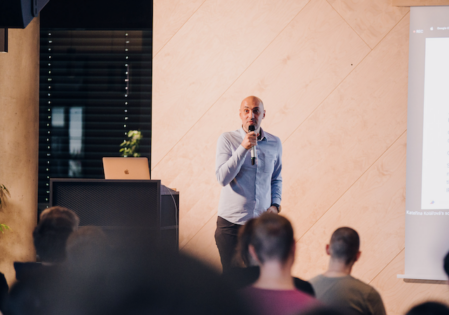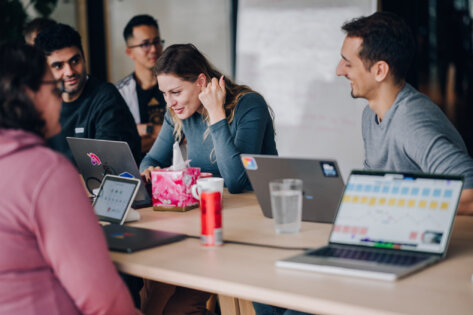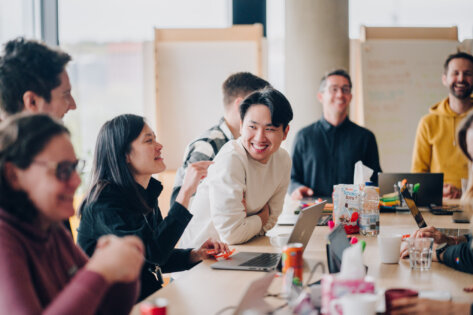Design at Productboard – what candidates and new hires can expect
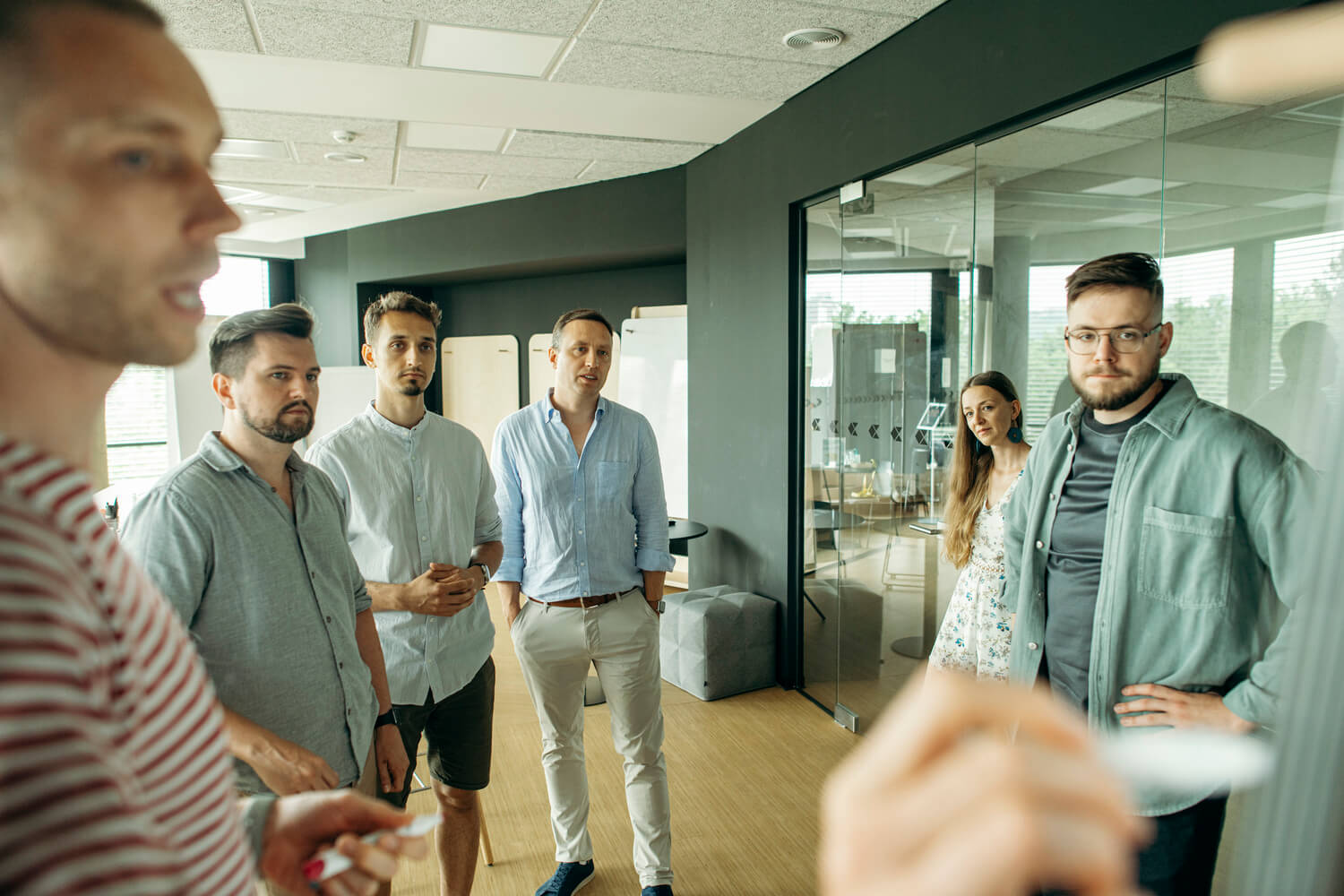
In this series of articles, I answer some of the most common questions we get asked by design candidates during the interview process. The aim is to provide as much clarity as possible, giving future candidates all the information they need to approach their Productboard journey with confidence.
In this latest and final installment, I’ll describe the interview process, explain what the first few weeks look like for successful candidates, and discuss some of the ways Productboard helps designers grow professionally.
What is the interview process like? What should I know in advance?
First of all, we’re friendly people. We understand that it’s stressful when you go into a hiring process, so we try to make it as relaxed and welcoming as possible. We try to keep it casual. We try to be transparent and guide candidates through the steps, so there are no surprises.
We also understand that interviewing is a two-way street – it’s all about getting to know each other and seeing if there’s a mutual fit. We work with candidates towards this goal, rather than just testing them.
Generally, the process starts with a portfolio review. Don’t have a portfolio? That’s okay. Just show us what you’ve been working on. It certainly doesn’t have to be a polished website.
Then there’s an intro call with a recruiter, followed by a call with the hiring manager. It’s important that candidates have early contact with a fellow designer, as it allows them to discuss design-related themes freely, without simplifying them. These rounds are just friendly chats where we evaluate candidates’ experience and answer any questions they may have.
Successful candidates then present to a broader team, followed by a 20-minute app critique. The final stage is a collaboration round, involving a product manager and an engineering manager.
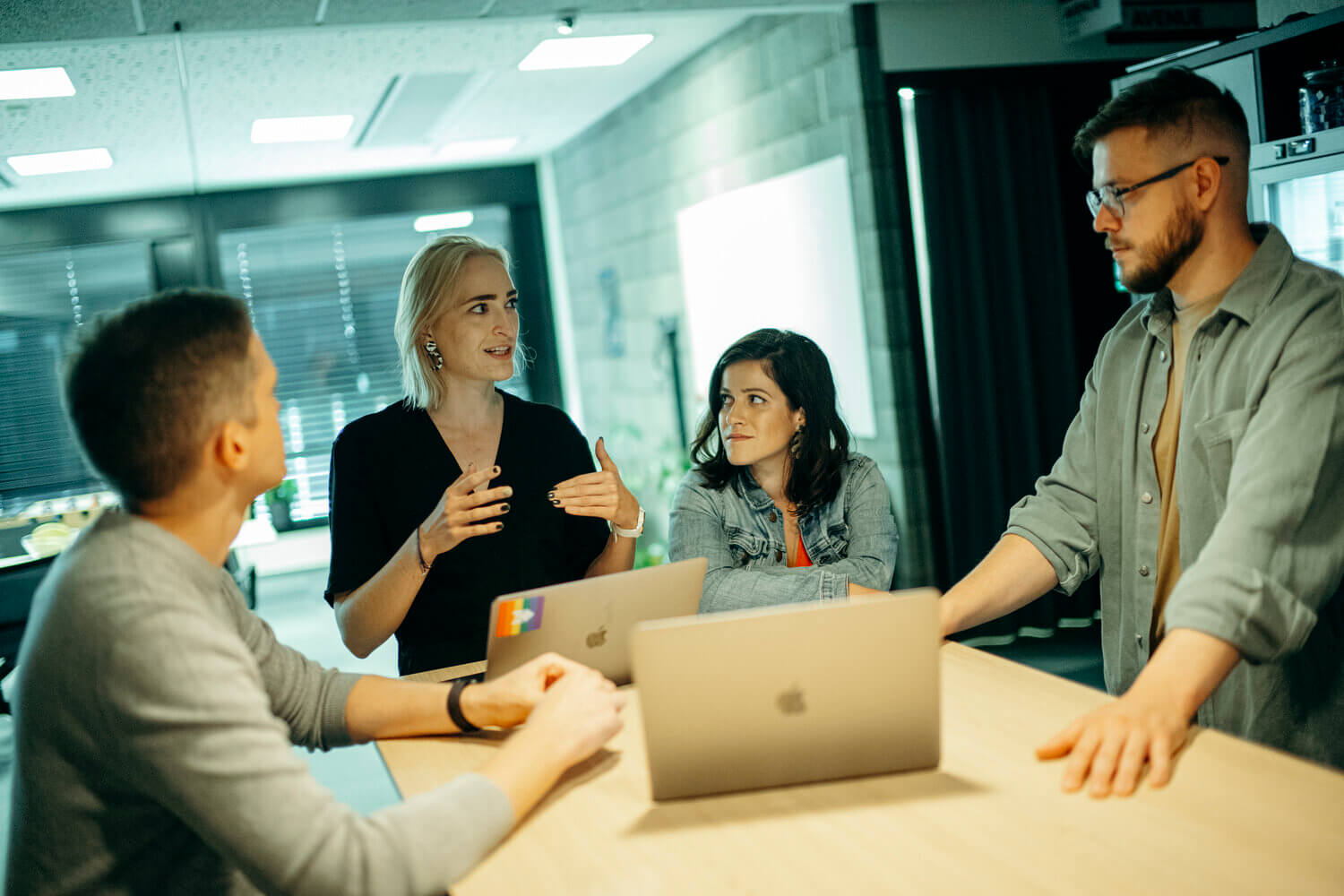
What skills are you looking for in a designer?
We’re looking for generalists: someone who can conduct research and talk to customers. They should be comfortable talking to other people. They are able to put together an interview script, ask the right questions and improvise. We need people with these skills, not just the hard skills of designing.
Besides that, we’re looking for passionate people who are great collaborators, because a lot of the work is about collaboration and communication. Are you able to clearly explain the problem you’re working on? Are you able to clearly explain what approach you are taking to solve it, and why?
We want designers that are aware of what they’re doing, and who are intentional in their process. They don’t just start drawing things. As our founder Hubert says, they’re not throwing spaghetti at the wall and seeing what sticks.
They should also have some experience from a similar type of SaaS company, building B2B products. It’s not a hard requirement, but it makes it easier for us if they know how to navigate in a product team.
Lastly, great visual design has always been our product’s differentiator, and while every designer on the team can lean on the existing design system, it’s important that they have a good visual taste and sense of typography, to establish a good visual hierarchy in UI design.
For new starters, what do the first few weeks and months look like?
We have an onboarding checklist that we give to every single newcomer. It runs through basic practical stuff, like where to pick up their swag, get a laptop, or a badge to access the building. It also covers all the people the new hire should meet and why, and all the things they should read or watch to get up to speed.
Together with that, I create a 30-60-90 plan and continuously discuss this with the new starter. So they understand exactly what to expect and what they should focus on first. The 30-60-90 plan helps to create the sequence, allowing new starters to feel comfortable that they’re on track.

What opportunities do designers have for personal and professional growth?
There are plenty of opportunities for growth here at Productboard – and some are fairly unique, at least here in the Czech Republic. For example, for two and a half years, we’ve been working with a world-class design advisor, Joshua Goldenberg, who was head of design at Slack, one of the first designers at Palantir, and VP of Design at Loom.
We recently doubled our hours with him. And we don’t just talk about our work. We also have one-on-ones where we can discuss our careers, goals, progress – anything we want.
“Joshua has a crazy amount of experience. He’s talked to so many designers, and seen so many different companies. It’s an amazing opportunity to have one-on-one time with a person of his caliber.”
We are also encouraged to attend design conferences across the world, meet people from the industry, and present our own ideas at events. We visit our headquarters in San Francisco, where we get to meet some of the best designers in Silicon Valley through our investors’ networks. And of course, we have a budget for books and courses.
What about career progression?
From my own experience, Productboard allowed me and a few other designers to step up to managerial roles. As the team was growing, we needed leadership. We didn’t just hire an external manager to come in and manage us. We were recognized for good work and for being a fit for the position. Now it’s been a year and a half, and a few of us are managing our own teams.
But you can always choose the track you want to take. No one forces you into managerial positions. If you want to stay as an individual contributor and be involved more in the actual design work, you can. A testament to that is one of our design managers, who went back to the IC track, becoming the first staff designer on the team and helping us define the role.
I hope this article provided as much clarity as possible and gave you a taste of what life is like as a Productboard designer. If you liked what you heard, why not head over to our careers page and check out the latest openings? If you’re a passionate and talented designer looking for an exciting new challenge, we’d love to hear from you.
In case you missed them, here are links to the two previous articles in this series:
- In the first article, I discussed the design ethos here at Productboard, our team set-up, and some of the challenges we’re currently facing.
- In the second article, I explained how we work, focussing on the important matters of collaboration and feedback. (link to article 2).


